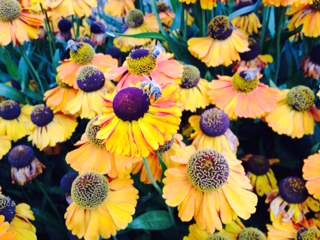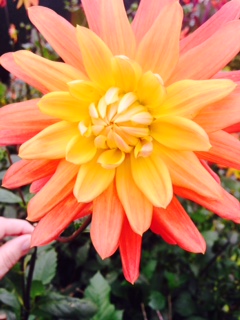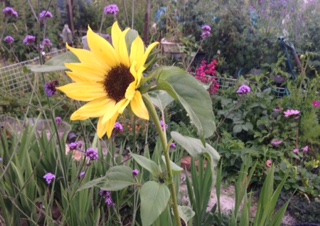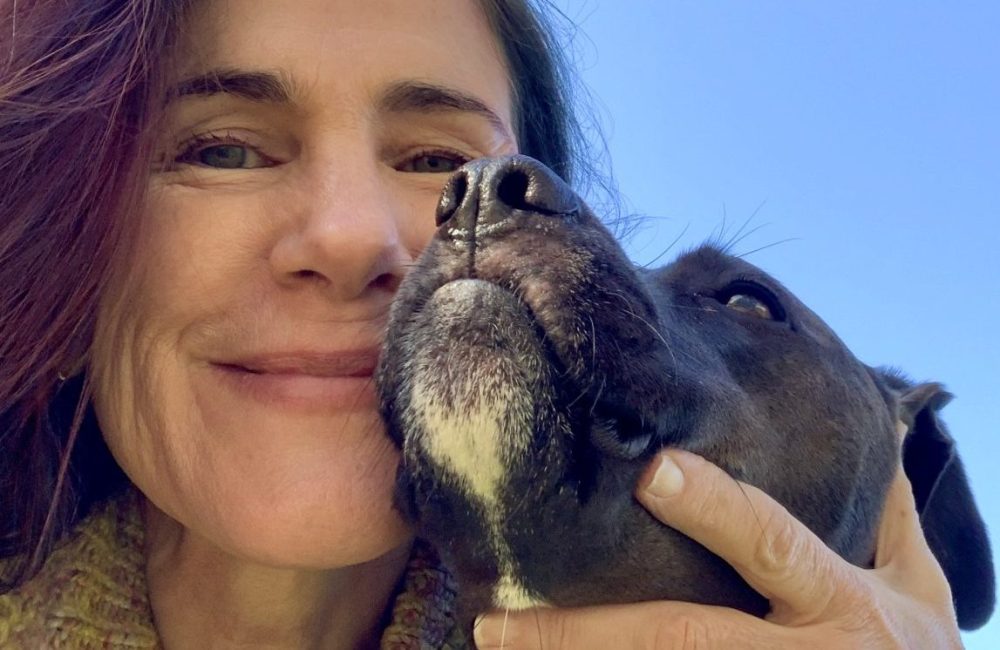Lucky for all of us, my recent post on bees inspired Katheryne Gatehouse, a sweet FaceBook friend, to impart her love and knowledge of bees…

A warm hello from chilly Kent, the county known as the Garden of England. Historically Kent was widely populated with orchards supplying fruit for the South East of England, London, and beyond. Orchard keepers were often beekeepers too often ensuring pollination of fruit flowers, vital for both the edible crops and also a supply of popular drinks like fruit juices, apple cider, peri-cider and mead (honey based). The taste of honey varies depending on which flowers the bees visit, and a large range of flowers is generally held to produce the best honey.

Many of our old orchards have disappeared, fallen into decay, or land used commercially or for housing . Agro-farming has diminished the numbers of hedgerows too, along with their flowers, and bees are fighting for survival. There has been a shift away from more bees being in the countryside, to moving into urban areas where the bees can forage in gardens. There is a greater percentage and wider range of flowers per square mile and bees expend less energy in searching out and retrieving the pollen, which they store in the pollen sacks on their legs to bring back to the hive. Natures saddlebags! The forager bees search out the best and richest sources, returning to the hive to “dance” their findings to the other bees who will then also fetch honey for the hive. The pattern and speed of the dance depends on how far bees need to travel and which direction to go, and the quality of nectar and pollen. I find this utterly charming — the nearer and better the pollen the faster and more excitedly they dance.
Bees are highly organised, sociable and hardworking but they are not just a quaint visitor, part of the pastoral scene, they are essential to our food production. If we want the same levels and varieties of food available to us, we all need to do more to help and this can be done easily in several ways — the most important two are growing more bee friendly plants in your gardens or allotments, and to stop using harmful pesticides and chemicals.

My own interest in bees has resulted from a wider interest in the environment, horticulture and nature and has grown slowly but surely over the years . So, initially, I increased the number of bee-attracting plants in my garden for the active bee year — late February to October, avoiding double or enclosed flowers where bees find it difficult to access the pollen and nectar, and increasing daisy-like, flat surfaced flowers like cosmos and zinnias. Also, long-tongued bees like tubular flowers, e.g., foxgloves and penstemon, which grow happily in my chalky alkaline soil.
Next I became a member of the Bumble Bee Conservation Trust a research facility based in Stirling Scotland and a charity I’ve donated to and held small local fund raising events for. Then an allotment, more scope and space for bee friendly plants alongside fruit and veg for me, recently a second plot (no stopping me now!) where friends and I are planting it up entirely for bees and other wildlife — no extra food for us!! Our own crops will benefit from having pollinators close because, and most exciting of all, we are attending a weekly bee keeping course with a view to having our very own beehive on the Bee plot.
So here we are at the start of our Next Great Bumble Bee Adventure. Would you like to hear how we get on in future…the trials, tribulations and setbacks? Plus of course the successes and the pleasures involved in making room for, and helping our friends, the bees🐝🐝🐝🐝🐝🐝🐝🐝🐝
What has nature taught you?


Hello Daal,
What a fabulous blog you have and I am now following. I am commenting from my WP Recovery Blog, but may I invite you to my other WP blog, “Cat Lyon’s Reading Den” for free help on ‘How & Where’ to promote your books when they release on free and low-cost book sites and more: anauthorandwriterinprogress.wordpress.com
Click on the Advice & Tips page and I hope you find it helpful as I just enjoy “paying it forward” all my book promoting experience with all authors.
Hope you have a successful New Year!
Author, Catherine Townsend-Lyon 🙂
LikeLiked by 1 person
Thank you, Cat – but the real thanks go to you! – your sites offer a treasure trove of info – I highly recommend all check out yours sites 🙂
LikeLike
A fascinating post. I remember reading how thirsty they get so I made them a little spot to drink in in our garden.
LikeLiked by 1 person
how lovely 🙂
LikeLiked by 1 person